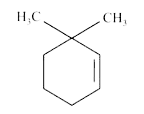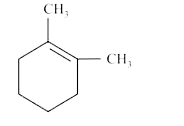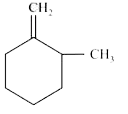Recommended Questions
- 1 - Bromo -2, 2 - dimethylcyclohexane on treatment with methanol give...
02:29
|
Playing Now - Trans-1-2-dimethylcyclohexane
01:54
|
Play - Which one of the following will give acetaldehyde and methanol on trea...
01:37
|
Play - Which of the following methods give rise to 1-bromo-2- phenylethane?
05:17
|
Play - S(N)^(2) प्रतिस्थापन के प्रति अभिक्रियाशीलता के आधार पर इन यौगिकों के ...
Text Solution
|
Play - निम्न यौगिकों को प्रतिस्थापन हेतु क्रियाशीलता के कर्म में व्यवस्थित की...
05:02
|
Play - Write the structure of the compound 1-Bromo-4-sec-butyl-2-methylbenzen...
02:46
|
Play - Among the following compounds how many has a stereoisomer that is a me...
Text Solution
|
Play - 1 - Bromo -2, 2 - dimethylcyclohexane on treatment with methanol give...
03:37
|
Play


